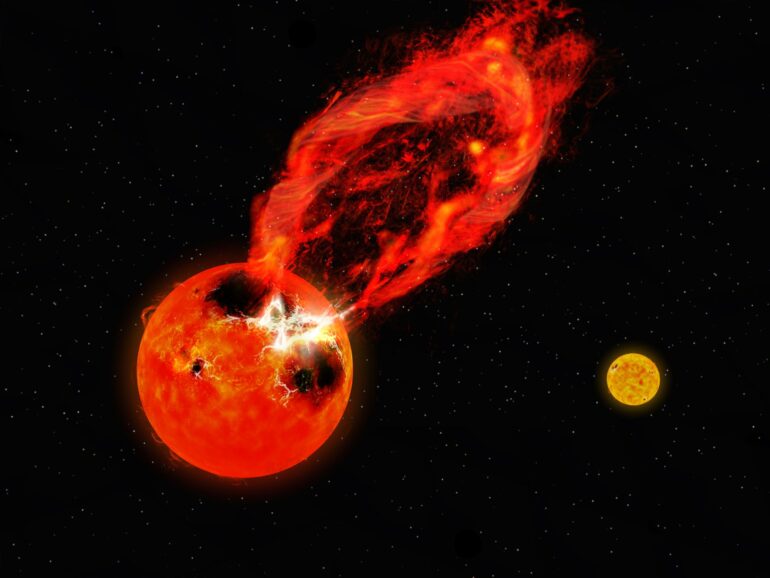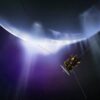A team of Japanese astronomers used simultaneous ground-based and space-based observations to capture a more complete picture of a superflare on a star. The observed flare started with a very massive, high-velocity prominence eruption. These results give us a better idea of how superflares and stellar prominence eruptions occur.
Some stars have been seen releasing superflares more than 10 times larger than the largest solar flare ever seen on the sun. The hot ionized gas released by solar flares can influence the environment around the Earth, referred to as space weather. More powerful superflares must have an even greater impact on the evolution of any planets forming around the star, or the evolution of any life forming on those planets. But the details of how superflares and prominence eruptions on stars occur have been unclear.
A team led by Shun Inoue at Kyoto University used the 3.8-m Seimei Telescope in Japan and the Transiting Exoplanet Survey Satellite (TESS) to monitor the binary star system V1355 Orionis which is known to frequently release large-scale superflares. V1355 Orionis is located 400 light years away in the constellation Orion.
The team succeeded in capturing a superflare with continuous, high temporal resolution observations. Data analysis shows that the superflare originated with a phenomenon known as a prominence eruption. Calculating the velocity of the eruption requires making some assumptions about aspects that aren’t directly observably, but even the most conservative estimates far exceed the escape velocity of the star (347 km/s), indicating that the prominence eruption was capable of breaking free of the star’s gravity and developing into Coronal Mass Ejections (CMEs). The prominence eruption was also one of the most massive ever observed, carrying trillions of tons of material.
These results were published as Inoue et al, “Detection of a high-velocity prominence eruption leading to a CME associated with a superflare on the RS CVn-type star V1355 Orionis” in The Astrophysical Journal on April 27, 2023.
More information:
Shun Inoue et al, Detection of a High-velocity Prominence Eruption Leading to a CME Associated with a Superflare on the RS CVn-type Star V1355 Orionis, The Astrophysical Journal (2023). DOI: 10.3847/1538-4357/acb7e8
Provided by
National Astronomical Observatory of Japan
Citation:
Combining observations to better visualize a superflare (2023, April 28)



